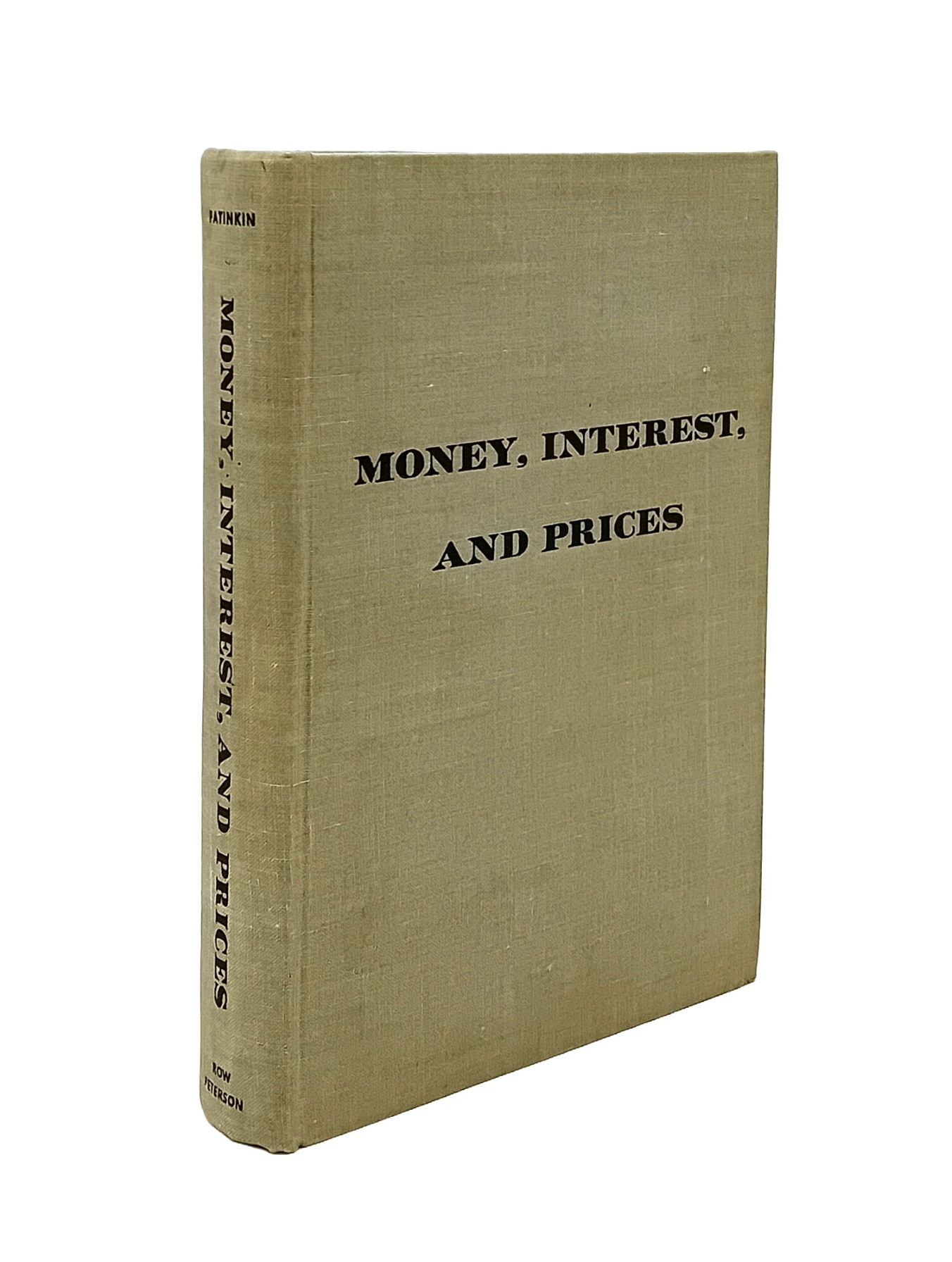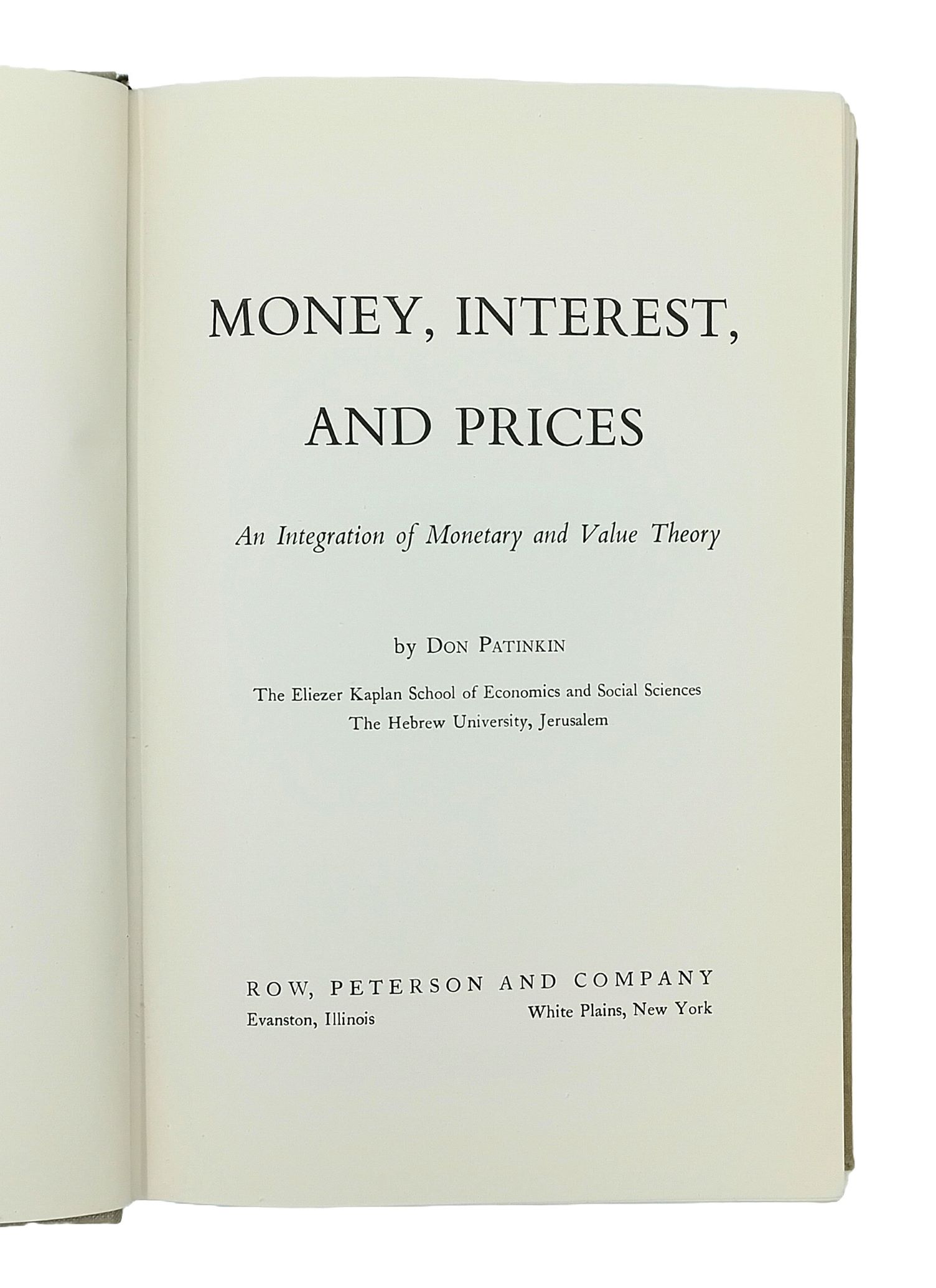

PATINKIN, Don.
Money, interest, and prices; an integration of monetary and value theory.
Evanston, Ill., Row, Peterson [1956].
8vo, pp. xx, 510; with six diagrams printed on two adhesive strips pasted on to the front free end-paper, as issued; a clean, crisp copy in the original publisher’s cloth, front board and spine direct-lettered in black; old ink ownership inscription to the front paste-down.

Added to your basket:
Money, interest, and prices; an integration of monetary and value theory.
First edition, rare on the market, of the book which was for many years one of the most widely used works on monetary economics. ‘Money, Interest and Prices is perhaps as great in its vision as Keynes’ General Theory. … Don Patinkin states his theory of the labour market and corresponding notion of the full employment equilibrium in just three pages of Money, Interest and Prices. These pages deserve great attention: they state the labour market model that became the standard foundation for the aggregate supply curve in the aggregate demand/aggregate supply (AD/AS) model. Although Patinkin himself did not formulate the AD/AS representation, it is implicit in his Money, Interest and Prices’ (H. Dixon, Surfing economics, ch. 3).
The contributions to monetary and macroeconomics topics made by Don Patinkin in this book have been acknowledged since its publication, through to the appearance of the more common second edition, to our days. ‘[The book’s] first accomplishment was to settle definitively many issues, such as the valid and invalid dichotomies between real and nominal magnitudes, Say’s identity, the nature of the Keynesian system, and the requirements for the neutrality of money, which had been disputed for decades. It also opened the road to the future by developing macroeconomic models from a well specified microeconomic foundation. In so doing, it established the base on which subsequent equilibrium macroeconomics built. Beyond that, in Chapter XII, Patinkin pioneered the development of disequilibrium analysis by presenting a fully articulated model that makes the key distinction between notional and effective demands, and using it to explain price and quantity adjustments in conditions of unemployment (abstract of S. Fischer’s review in NBER Working Paper No. 3595, January 1991).

